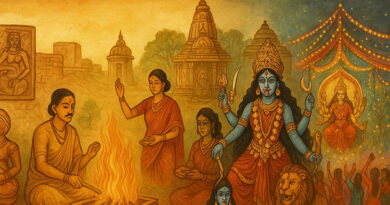Inspiration and Essence of Human Culture and Artistic Forms

In studying the essence and inspiration behind human culture, often considered the hallmark of humanity, and the artistic forms embedded within it, we find that nature, which is regarded as the ultimate element, is the primary source of the joy that permeates the entire creation. The circumstances under which art forms are acquired through education and training, their documentation, printing, or classicalization, represent the stages of their development, which can be considered the refined forms. Essentially, these are related to the development of human civilization. In the vast and far-reaching world, where life and its possibilities exist, everything is a part of nature, including human beings. A prominent feature of human life is its “consciousness,” in which the paradigms of all life’s arts inherently reside.
Humans began to contemplate the uniqueness of various trees, plants, animals, birds, celestial bodies, rain, floods, lightning, storms, etc., around them, questioning, “What are all these?” Understanding food to satisfy hunger, water for thirst, and various measures for physical security from cold and heat became a part of human life. When stability came into its life stream, inner feelings started to awaken. Whatever it saw and pondered upon, it felt compelled to express.
Humans adopted depictions of various animals, birds, attractive natural scenes, hunting, agriculture, trade, dancing, singing, worship, and their symbolic representations, which served as means of expression before the development of language. These are primary means of communicating emotions, thoughts, and experiences in human consciousness. In this form, the living saga of primitive life is expressed through silent illustrations. These early forms of Paleolithic art are also indicators of artistic tendencies and cultural development. Benevolent sentiments are inherent in the establishment of these art forms. Art means creating something that is pleasing to see and hear.
Proximity to nature brings simplicity and naturalness to these drawings. They reflect the civilization and grandeur of the time, showcasing cultural identity. These art forms fulfill internal artistic expression inspired by primal joy. In this way, the original source of all art forms can be said to be a culture that inspires joy. Dance, worship, public art, and figures seem to express the feeling of joy. Thus, it can be said that the overall expression of joy is inherent in our culture. After music, painting is considered the most important in fine arts, emphasizing communication and understanding among people. The diversity in the expression of forms and emotions is exhibited in the rich style of Indian cultural heritage in folk life.
Art and culture are expressions of life, reflecting diversity in expression, subject, and form. Imagination and emotion are the driving forces in art, connected to the external and internal environment. As a result, artistic expression awakens in human consciousness. Our culture is the tangible manifestation of this awakening. In other words, nature is the first teacher of human imagination in art. Continuous practice and training bring uniqueness to it. An artist, inspired by their practice and art, shapes many things in various forms. This is the result of the artistic and cultural consciousness of the human mind, which, when a form of art becomes embedded in a person, turns them into an artist. The artist, through their artistry, begins to depict various animals, their activities, behaviors, many cultural contexts, stories, and the diverse landscapes created by nature using colors in artistic forms. It is no surprise when it begins to illuminate human life as a form of culture.
Dedication to art, despite many changes in surrounding circumstances, does not separate an individual from traditional art forms, nor does long-term practice leave them devoid of their original means. Instead, changing circumstances and immediate challenges provide the dedicated practitioner or heir an additional art and understanding to keep the tradition and their art forms alive in the present. Whether the artistry is on objects or human limbs, it is always captivating and enchanting. A dedicated practitioner immersed in art becomes a model of art itself. This unending stream of artistic life flows from one generation to another, dazzling and enthralling humanity with its sparkling waves.
Every traditional custom is generated and organized like the branches of a banyan tree, passed down from generation to generation. Just as the presence of materials is essential, there are continuous, active traditions of creating those materials or art forms. And just as there are traditions of using materials, there are family traditions of craftsmanship that continue from generation to generation. The point is, there are traditions of creating a particular item for a specific context or occasion in a particular family, and these traditions are passed down through generations. These traditional practices bind and connect people in society. Numerous concepts and traditions are prevalent in human life, providing examples of human relationships.
The field of art is vast and ancient. The very creation of humans stems from a unique creativity, and art has developed alongside human life. Whenever the creative vision of a person has focused on something, it has brought novelty to its forms, increasing attraction and value through its expressive nature and evolving tendencies. The dedication and artistic consciousness of individuals committed to these art forms have developed, illuminating the entire human society. The form in which painting manifests itself is enchanting. The allure behind it can be attributed to the availability of modern forms or means. The influence of the current environment can also be considered. A return to old art after a long interval might also stem from an inner compulsion.
Whatever the fundamental reason, it can be definitively said that the natural inclination of the human mind towards art is nature-given. In whatever form art is presented to us, we are influenced by it. This is the gift of our culture—the fine art whose waves of beauty entice the human mind, eager to immerse and dive into them. This is the charm and allure of our traditional arts and the radiance of our culture.
The author is a well-known scholar of Chhattisgarhi culture.




